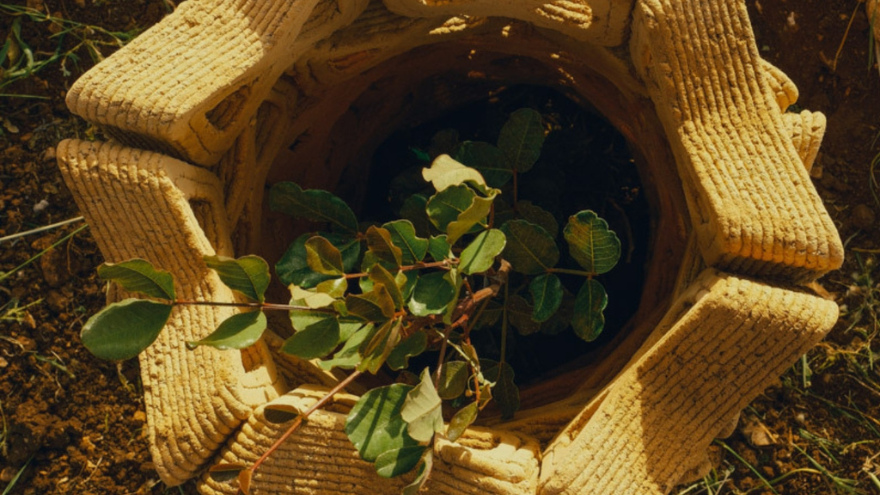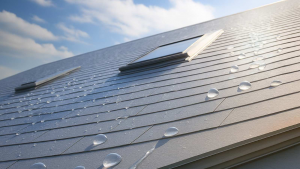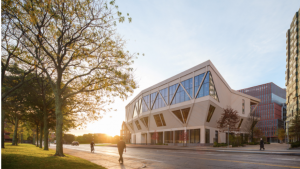TreeSoil, developed by the Material Topology Research Lab (MTRL) in collaboration with the Weizmann Institute’s Tree Lab is a 3D-printed earthen shelter designed to help young trees survive an increasingly unstable climate. Using local soil, sand, and natural binders, MTRL robotically prints modular bricks that interlock without adhesives, creating low-impact micro-structures that protect saplings in their most vulnerable early years.
TreeSoil’s architecture serves as living climate infrastructure, each module is shaped using site-specific environmental data such as sun exposure, prevailing winds and humidity levels allowing the shelter to actively regulate conditions. The thick earthen walls moderate temperature swings, reduce water loss and shield saplings from heat, frost and rapid evaporation. By improving establishment rates, the system directly accelerates reforestation and carbon-capture efforts in regions where young trees frequently fail due to extreme weather.
Unlike conventional protective tubes made from plastic or synthetic materials, TreeSoil’s design is fully biodegradable. As the tree matures, the structure slowly breaks down, enriching the surrounding soil and leaving no long-term footprint. This closed-loop behaviour means the intervention is temporary, restorative and materially aligned with the ecosystems it support. TreeSoil advances the concept of regenerative architecture: structures that not only shelter but participate in ecological cycles.







